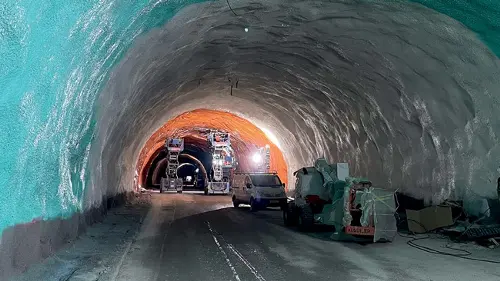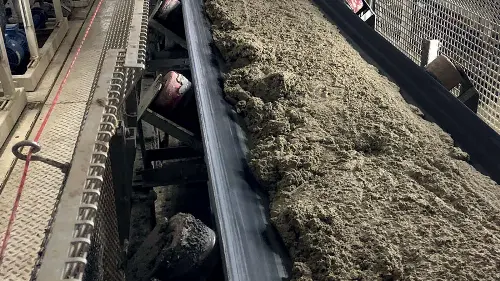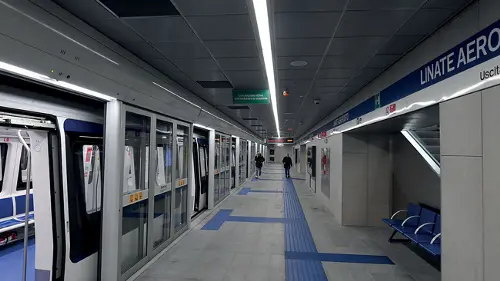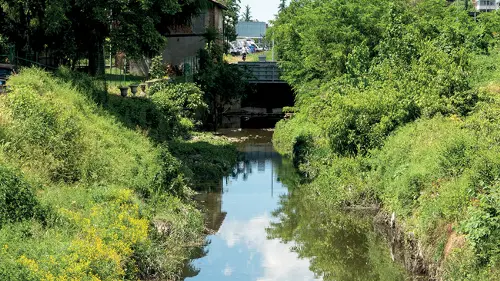
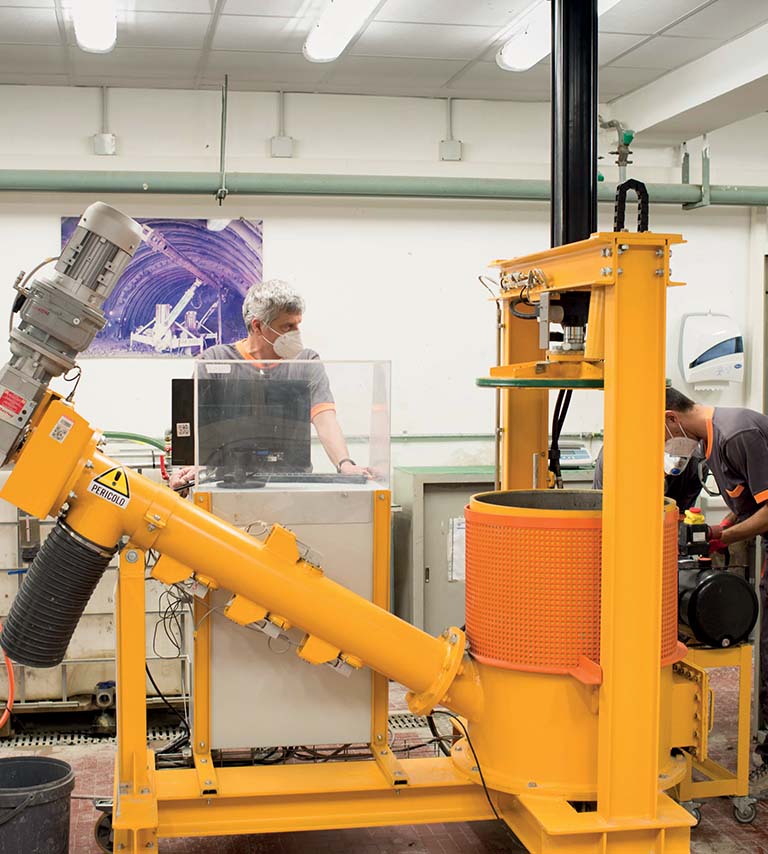
Engineering ability and creativity: the high profile of Italian knowhow
All around the world Italian tunnelling experts have demonstrated unrivalled expertise and flexibility when overcoming varying and unpredictable underground conditions.
All around the world Italian tunnelling experts have demonstrated unrivalled expertise and flexibility when overcoming varying and unpredictable underground conditions.
Italy boasts a high level of technological expertise in the underground works sector. Where does this globally acknowledged know-how come from?
To answer this question, we have to take a look into our history. We have to go way back to the extraordinary engineering ability of the ancient Romans who constructed a large number of hydraulic and road tunnels, an unbelievable achievement considering the era in which they were built. These works highlight their unrivalled engineering ability and “creativity” in overcoming the technical difficulties of working underground using only the tools and knowledge of that time. And then we shouldn’t forget that Italy, because of its topography and chain of mountains separating it from the rest of Europe, has had to make “a virtue out of necessity”, digging tunnels in order to create an efficient transport system both of railway and of road.
The first “modern” tunnel in the world was, undoubtedly, the Frejus railway tunnel, so strongly desired by Italian first prime minister Camillo Benso, Cont of Cavour, who, when addressing the Parliament during the debate to approve legislation to finance the project, declared: “Gentlemen, the undertaking we are proposing, there is no denying, is gigantic. Its execution, however, must be achieved for the glory and benefit of the country. ……… I trust you will crown your work with the greatest of all modern undertakings and deliberate on the tunnelling at Moncenisio.” In the nineteenth century, the need to “connect the nation” by means of an adequate railway network meant that a large number of tunnels also needed to be constructed, in a very short space of time, in the complex and difficult terrain of the Apennine Mountains extending along the length of the Italian peninsula. For the construction of the motorway network after the Second World War, so many new and ambitious tunnels had to be constructed that Italy became the leading country in Europe in terms of the number and length of road tunnels.
This historic journey helped forge a generation of highly skilled engineers and craftsmen directly in the field, “knowhow” that was gradually passed down and, thanks to which, demonstrated to the world our unrivalled expertise and flexibility when overcoming often varying or unpredictable underground “geo” conditions. And we mustn’t forget Italian universities, which have always turned out quality technicians and engineers: since 1967 Politecnico di Torino has held a “Tunnel Construction” course and we have always had a first rate university system.
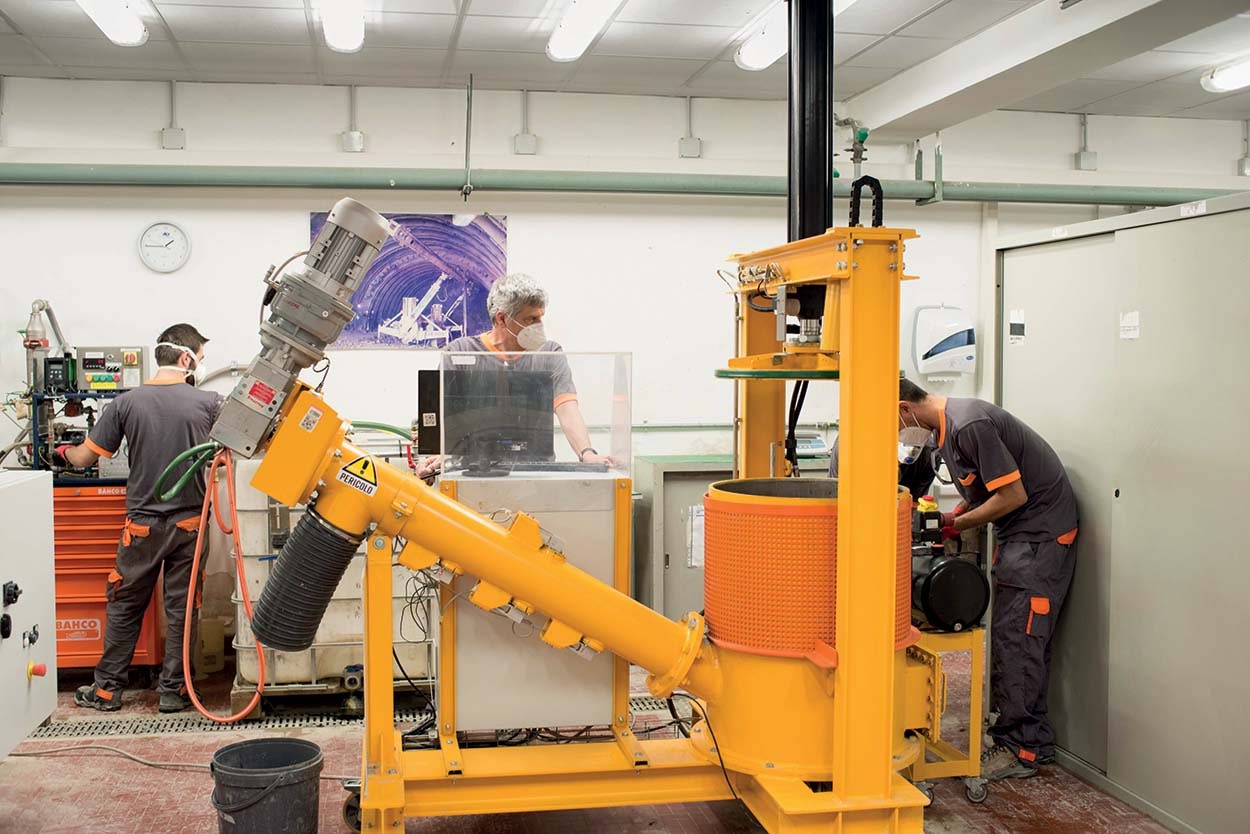
What are the most significant ongoing works in Italy and around the world? Which large-scale sites are Italian companies working on?
At the moment there are so many tunnels under construction around the world that it would be practically impossible to answer this question without leaving something out. Also because, for those like me who work on tunnel construction from a scientific perspective, the most challenging projects are not necessarily the most “ostentatious” ones, but those where specific criticalities need to be tackled. The challenges we are coming up against range from extremely deep tunnels, which means enormous loads from rock formations and the difficulty in carrying out preliminary investigations, to tunnels with larger and larger diameters to meet the needs of modern transport systems, to tackling increasingly high water heads and to overcoming increasingly complex and heterogeneous geological conditions. If I had to summarise, long, deep tunnels are the ones that represent the frontier in tunnel construction. In Italy we have two of the largest projects in the world currently under construction: the Brenner tunnel between Italy and Austria and the Moncenisio tunnel between Italy and France, without forgetting the tunnels along the third Milan-Genoa link or those along the High-Speed railway line between Naples and Bari, or the large railway projects included in the National Recovery and Resilience Plan (PNRR) which features the construction of an incredible number of tunnels.
The Italian PNRR includes investments into sustainable mobility. Is this an occasion to build new infrastructures and complete those already under construction?
The scheduled large-scale projects to boost the Italian High-Speed rail network includes the construction of an incredible large number of tunnels in really challenging ground and geological conditions that will really put designers to the test, as well as the construction companies contracted to construct them. The use of full-section TBMs will be boosted and driven to levels we could never even have imagined before now here in Italy. Speaking as a professor, however, I must underline my concerns from a human perspective. Universities only manage to turn out a few engineers and technicians specialised in this sector. Youngsters tend to choose professions more in line with modern times, forgetting how fascinating the “concreteness of construction” can be. It is certainly a job that requires sacrifice, but it is up to the construction companies business world to highlight its attractions and give it the importance, including social, it had in the past.
What cutting-edge materials and techniques have been developed in recent years for digging tunnels and conditioning the ground?
The use of full-section TBMs, especially when operating in EPB mode, has become incredibly more widespread because of the numerous advantages of using this technology. In recent years Italy has placed a lot of emphasis on environmental issues in the construction industry, with the introduction of very advanced legislation in the sector covering ground and rocks from tunnelling work. To meet the requirements of these specifications it became necessary to develop cutting-edge products and surveying methods and this development has also involved universities and the Italian Research Council. It is important to emphasise how conditioning ground and rocks in EPB technology is one of the sectors in which, in the last few years, scientific research has shown to be more “effervescent” to get both a better understanding of the mode of operation of conditioning agents perfected by both industry and the laboratories of various universities, such as the Colorado School of Mines, Politecnico di Torino and the University of Ruhr, and to develop increasingly environmentally sustainable products with higher rates of biodegradability and very low eco-toxicity. I would like to underline, however, that to carry out adequate experimentation during the design phase and while work is ongoing, laboratories with considerable expertise and knowhow are required due to the delicacy and sensitivity of the tests to be carried out. This aspect is often overlooked by those who construct tunnels.
What lines of research are open at the moment and which will be opened as we look towards the future?
The complexity of problems related to tunnelling work, and with long, deep tunnels in particular, has stimulated research work, with researchers now required to provide their contribution on how to investigate and interpret geological formations at great depths; predict and simulate the behaviour of rock masses encountered at great depths subjected to high lithostatic pressure; predict and manage underground seepages; improve technology, essentially of TBMs, in order to tunnel quickly and control deformation in rocks and the ground and, as and when required, cope with seepages of water under high pressure; improve ground conditioning and retro-injection procedures; improve safety for the operators; guarantee a sufficient service life for structures; and lastly, preserve and protect the environment.
Larger and larger machines are now able to operate successfully and with high performance in increasingly complex natural rock masses (heterogeneous, hard and abrasive with water under high pressure) thanks to the technological evolution of mechanical engineering, information technology, chemistry and robotics, and thanks also to the ability to investigate, with pretty good reliability and in relative safety, the behaviour of natural rocky masses that will be encountered ahead of the machine.
I would also like to say a few words on the complex issue of maintenance work on structures coming to the end of their service life. This is an increasingly important topic that will require, on the one hand, enormous resources, while, on the other, far from banal engineering skills to manage old infrastructures.
In the management of environmental issues when constructing infrastructures, which also means tunnels, we have seen enormous progress and a vast amount of scientific research. And from all this research, it would be remiss of me not to mention the studies carried out on the handling and management of excavated materials, with a view to reusing them as part of the virtuous journey towards a circular economy. Research at international level is focusing a great deal of attention on quantifying the “carbon footprint” of the various construction phases of large-scale infrastructures, and specific focus is being concentrated on energy efficiency in processes involving not only TBMs, which must strive to become “green TBMs”, but also on the entire energy consumption chain (belt conveyors, ventilation systems, etc.). And lastly, we should not forget the in-depth work being carried out to raise the quality and durability of tunnel coverings and linings.
Collaboration between companies and universities has become increasingly important in the development of innovative products. What is your appraisal of current initiatives and of those moving forward?
Collaboration between companies and universities has become more important than ever, for both parties. For example, the relationship between Mapei SpA and Politecnico di Torino in the ground conditioning sector and in two-component grout products goes back 15 years: we have developed procedures, tested products and carried out in-depth experiments which has led to, on the one hand, far greater expertise in the entire world of infrastructures, in that certain tests and testing methods have become normal practice, while on the other it has enabled the quality of products to be improved. In parallel, choosing the “right” TBM with the correct equipment, one of the key points in designing and then constructing tunnels, means that the work of researchers, designers and those who build the machines will need to be integrated in order to find and test increasingly efficient, safe and innovative solutions. And then, obviously, the capacity to carry out preliminary investigations to give both the indications required to quantify the feasibility of the work and to describe, from a quantitative perspective, the mechanical characteristics of the rocky masses to be passed through.
Finally, the Universities has the great responsibility to prepare good engineers that will be able to take the lead in the industry.
Daniele Peila
Daniele Peila is presently Full Professor at Politecnico di Torino teaching “Tunnelling” and Director of the Post-graduate Master Courses: “Tunnelling”, “Highway Engineering and Integrated Road-Network Management” and “Sustainable Design in Geo-Engineering and Tunnelling Works”. He is responsible of the laboratory for Tunnelling and Rock Engineering at Politecnico di Torino. He was Vice-President of International Tunnelling and Underground Space Association and has been acting as Vice-president Italian Tunnelling Association since 2013. He was also a member of the Executive Board of the Geoengineering and Environment Association for 10 years.
He was awarded the “Colombo lecture” prize for 2022, a recognition that the Italian Tunnelling Society gives tunnel experts each year.







